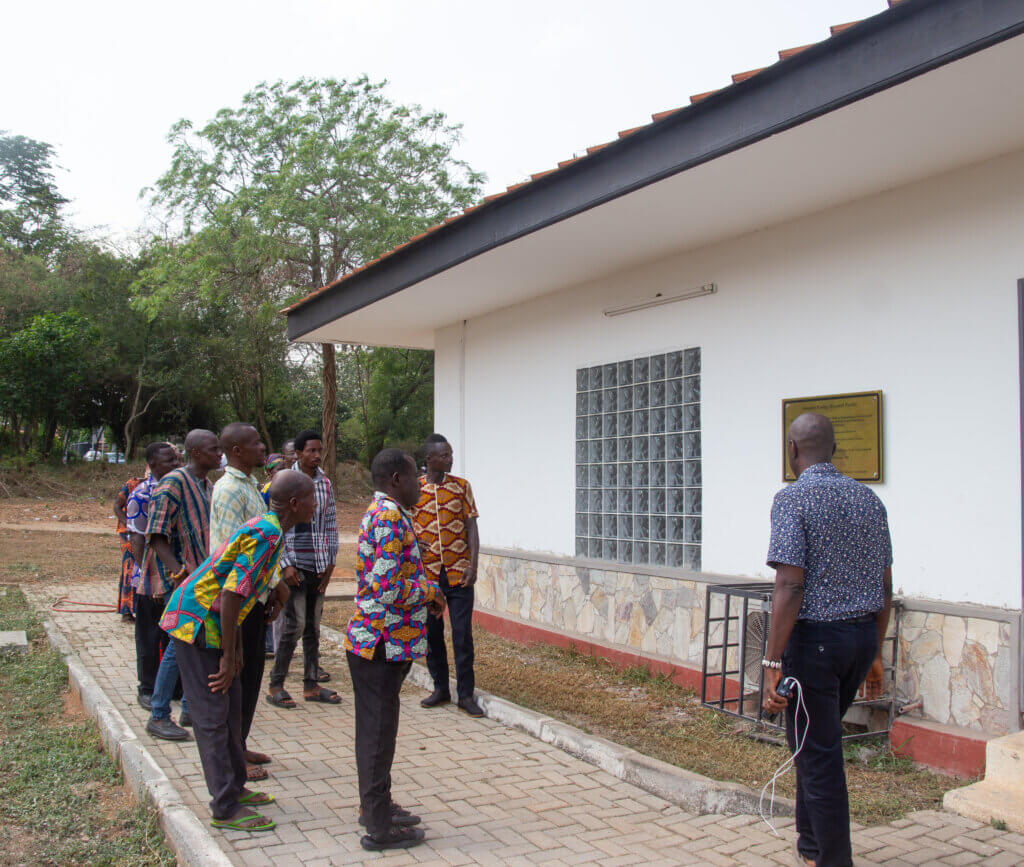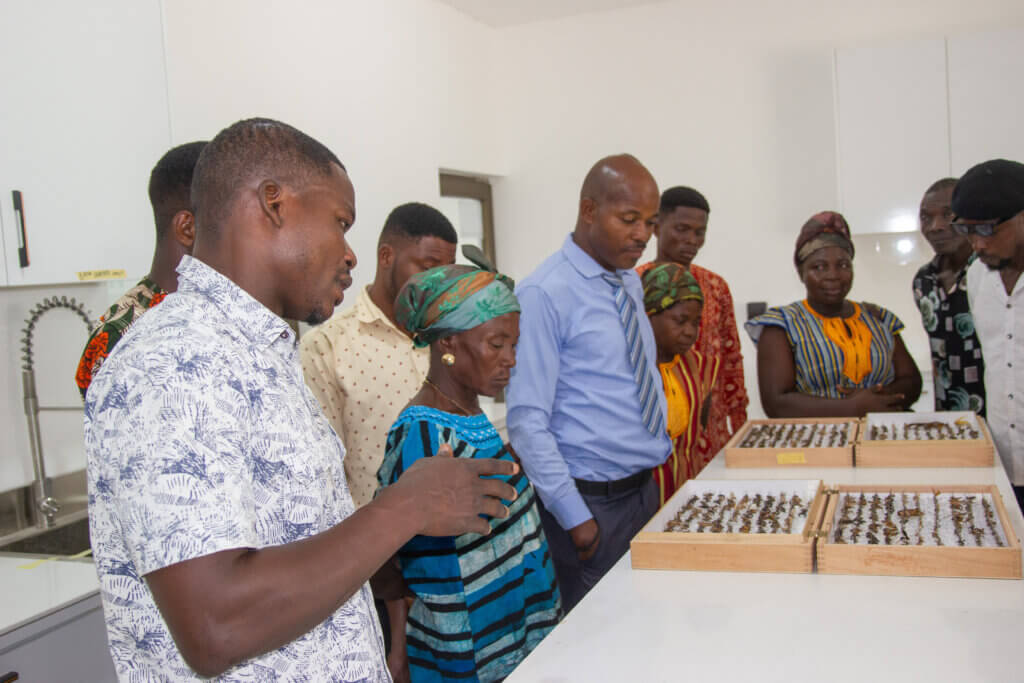Community stakeholders visit Target Malaria Ghana’s research facility

On Wednesday, 22nd January 2025, Target Malaria Ghana welcomed members of the two project communities to the Mosquito Ecology Research Facility in Accra for an interactive visit, fostering engagement and knowledge sharing about our work. This visit was an opportunity to present the insectary infrastructure and celebrate the partnership between scientists and the communities.
Fourteen representatives from the two project communities, Abutia Amegame and Mafi Agorve, were invited to see first-hand how their contributions have supported the research in fighting malaria. These communities have been key partners in the ecological studies that have been conducting jointly by the University of Ghana and the University of Oxford, allowing the sampling of mosquitoes and the organisms they could interact with in their environment.
During the visit, the communities were able to witness the journey of the biological samples collected from their villages to the insectary and laboratory. They were able to understand the scientific processes involved, allowing for an immersive experience within the research environment.


The tour began with an introduction to the three key facilities that make up the research center:
- The Semi-field Facility: A controlled environment where mosquito behavior is studied in conditions mimicking the wild.
- The Rabbitry: A space for raising rabbits, an essential resource of blood for mosquito feeding activities.
- The Insectary: The hub for breeding and studying wild-type mosquitoes at various life stages. The insectary in Ghana does not rear genetically modified mosquitoes.
Inside the Laboratory: a peek into the scientific world
Once inside the laboratory, visitors were guided through several specialized rooms, each offering unique insights into the meticulous research being conducted:
- The Insecticide Testing Room: Here, community members were told how mosquitoes are tested for resistance to various insecticides, a crucial aspect of vector control strategies.
- The Imaging Lab: Equipped with advanced microscopes, this room fascinated visitors as they observed larvae, pupae, and adult mosquitoes up close. The magnified view sparked curiosity and deepened their understanding of the mosquito life cycle.
- Insectaries: These spaces highlighted the rigorous processes involved in mosquito rearing and experimentation.
- The Semi-field Processing Lab: here, organisms brought from the field are processed before they are taken to the semi-field facility for any research activity.
In addition to the facility tour, the visitors viewed presentations from PhD students who shared insights into their work. These presentations emphasized the scientific rigor and commitment driving Target Malaria Ghana’s mission to support with answers to the ecological consequences of reducing the population of Anopheles gambiae mosquitoes to stop malaria transmission.
Bridging Science and Community
The height of the day was the interaction between the researchers and the community members. Community members expressed their appreciation for the transparency and inclusivity of the project, while researchers acknowledged the invaluable support and cooperation they have received from the communities over the years.
The Principal Investigator for Target Malaria Ghana, Dr. Fred Aboagye-Antwi, thanked the attendees for their trust, acceptance, and continuous collaboration. He emphasized the critical role the communities play in the success of the project and reiterated the team’s commitment to ensuring that their work benefits the communities and contributes to the global fight against malaria.
